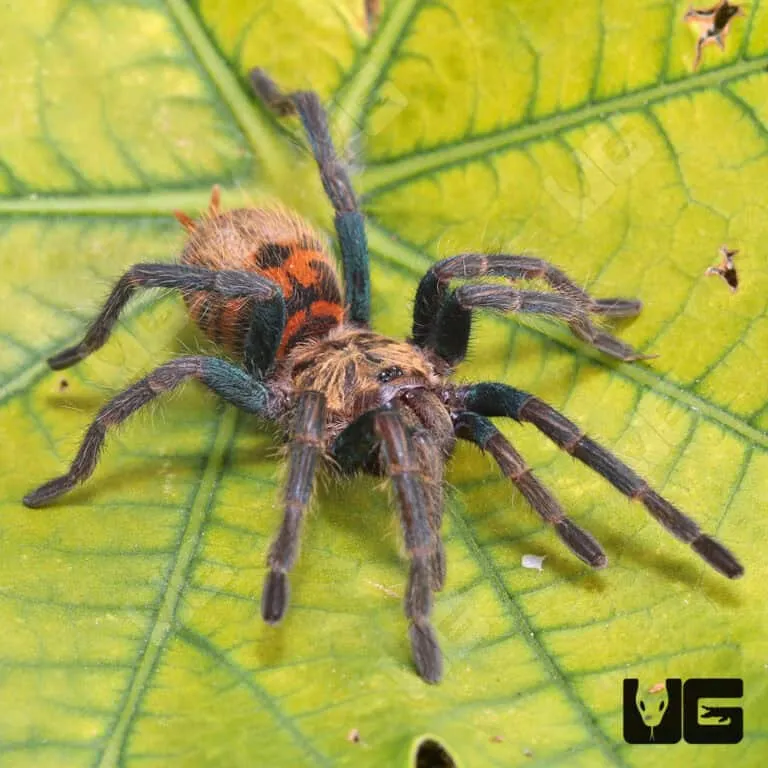Greenbottle Blue Tarantula Overview
The Greenbottle Blue Tarantula (Chromatopelma cyaneopubescens), often called the GBB, is a vibrant and captivating species highly sought after by tarantula enthusiasts. Native to the dry coastal regions of Venezuela and Trinidad, the GBB is known for its striking coloration a metallic blue on its legs and carapace, contrasting with an orange abdomen. This guide provides comprehensive information on all aspects of owning and caring for a Greenbottle Blue Tarantula, from initial setup to advanced breeding techniques. Whether you’re a seasoned arachnid keeper or a curious beginner, this guide will equip you with the knowledge to provide the best possible life for your GBB.
Appearance and Characteristics
The GBB tarantula is one of the most visually stunning tarantulas. Adults typically reach a leg span of 5-6 inches. The carapace and legs display a brilliant metallic blue hue, while the abdomen is a fiery orange. This vibrant coloration makes them a favorite among hobbyists. Their appearance is not only beautiful but also serves as a visual indicator of their health. A healthy GBB will exhibit vibrant colors, while dull coloration can be a sign of stress or illness. The contrast in color between the legs and abdomen is one of its most striking features.
These tarantulas have urticating hairs, which are used for defense. They can flick these hairs towards perceived threats. Their temperament is generally considered to be more defensive than aggressive, meaning they will often try to flee or posture before biting. Although bites are not usually medically significant, they can be painful and can cause localized swelling and discomfort. Females typically live longer than males, often reaching 10-12 years, while males may live for 3-5 years after maturity.
Origin and Habitat
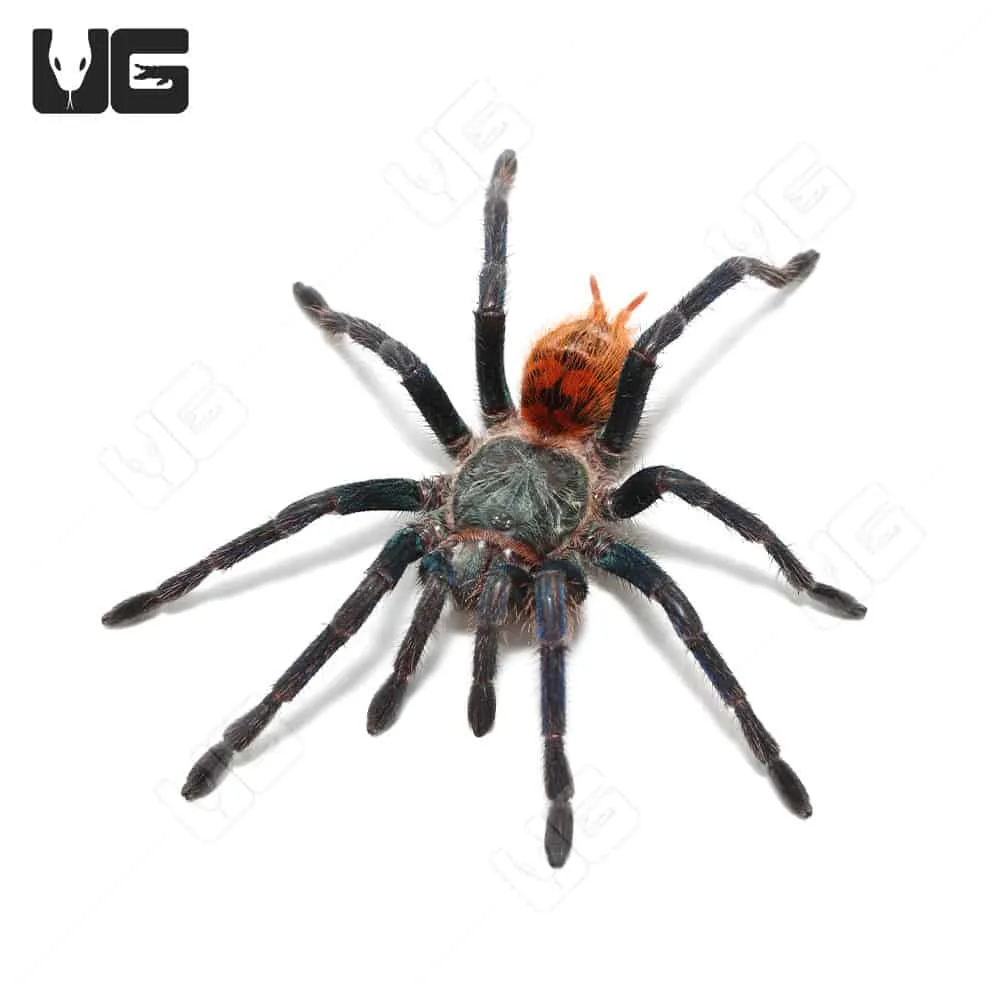
Greenbottle Blue Tarantulas are native to the dry coastal scrublands and arid regions of Venezuela and Trinidad. In their natural habitat, they create elaborate web structures, often utilizing the sparse vegetation and rocky terrain to build their retreats. Their environment consists of high temperatures and low humidity. They are known to be arboreal, spending a significant amount of time in the upper regions of their habitat. Understanding their natural habitat is crucial for replicating the optimal conditions in captivity. The key to success with GBBs is understanding where they come from and attempting to simulate their natural environment as closely as possible.
The climate in their natural environment is crucial to their health, as they thrive in specific temperature and humidity conditions. The temperature ranges typically around 75-85°F (24-29°C), and humidity levels are much lower than those required for many other tarantula species. Their arboreal nature means they will spend more time webbing and in the upper parts of their enclosure, creating a webbed haven. This understanding informs the care requirements including enclosure type, substrate, and overall maintenance.
Greenbottle Blue Tarantula Care
Enclosure Setup
A proper enclosure is essential for the well-being of your Greenbottle Blue Tarantula. Because they are arboreal, a taller enclosure is necessary, allowing them to create their web structures. An enclosure that is at least three times the tarantula’s leg span in width and height is generally recommended. The enclosure should be well-ventilated to prevent the buildup of excessive humidity, which can lead to health problems. The enclosure should be escape-proof, with a secure lid to prevent escapes. It is advisable to select a glass or acrylic enclosure to help maintain the proper temperature and humidity levels.
Substrate and Decorations
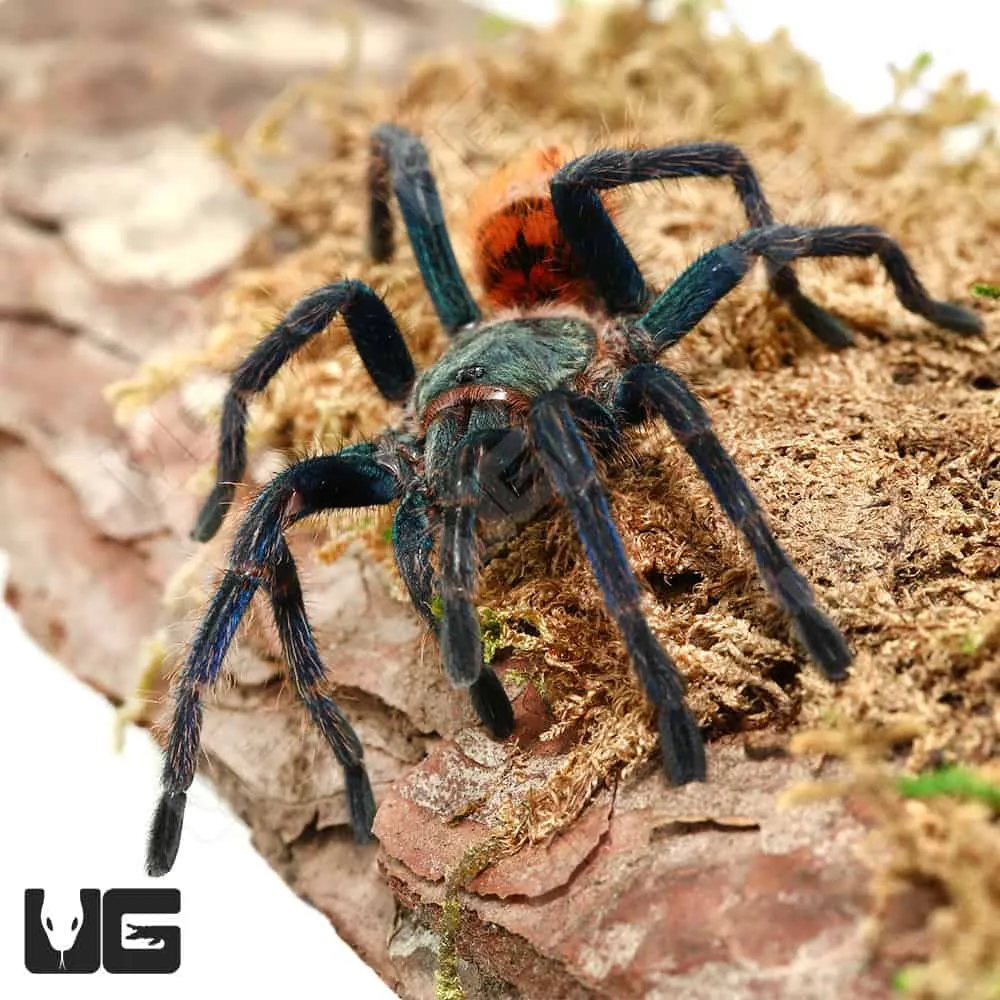
The substrate should be kept relatively dry, as GBBs prefer low humidity. A mixture of peat moss, vermiculite, and a small amount of dry sphagnum moss can provide a suitable base. The substrate should be deep enough to allow the tarantula to burrow if it chooses, and provide a stable base for the webbing. Decorations are vital for providing hiding spots and a sense of security. Cork bark, branches, and artificial plants can be used to create a naturalistic environment, encouraging the tarantula to web and explore. Arrange the decor in a way that gives the tarantula opportunities to climb and web.
Temperature and Humidity
Maintaining the right temperature and humidity is critical for a healthy GBB. The ideal temperature range is between 75-85°F (24-29°C). A heat mat or a low-wattage heat lamp can be used to maintain this temperature. Avoid placing the heat source directly under the enclosure to prevent overheating. The humidity should be kept relatively low, around 60-70%. Use a hygrometer to monitor the humidity levels. Misting the enclosure lightly once or twice a week is usually sufficient to maintain the proper humidity. Ensure the enclosure has good ventilation to prevent mold growth and to allow excess humidity to escape. Proper climate control is essential for the tarantula’s molting process and overall health.
Feeding and Diet
Feeding your Greenbottle Blue Tarantula appropriately is essential for its health and growth. GBBs are voracious eaters and will readily consume a variety of insects. The diet should be diverse to ensure the tarantula receives all the necessary nutrients. A healthy diet leads to healthy molts and vibrant coloring. It is important to provide the right food sources, and frequency of feeding to keep your GBB healthy and happy.
What to Feed
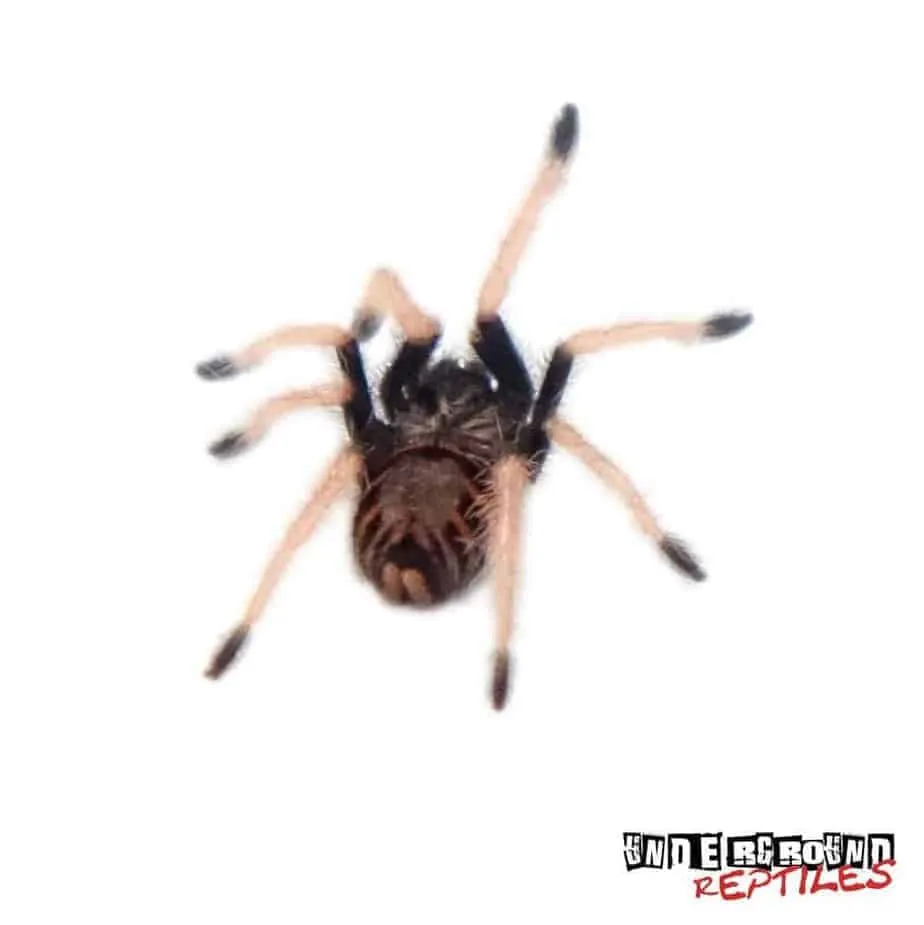
The primary diet of a GBB should consist of appropriately sized insects. Crickets, mealworms, and Dubia roaches are popular choices. Varying the food sources is important for providing a balanced diet. The size of the prey should be no larger than the tarantula’s body length. Pre-killed prey can be offered to avoid any harm to the tarantula. Supplementing the diet with occasional treats like waxworms can be done, but they should be offered sparingly due to their high-fat content. Always make sure the insects are gut-loaded, meaning they are fed nutritious food prior to being offered to your tarantula.
Feeding Frequency
The feeding frequency depends on the tarantula’s age and size. Spiderlings should be fed 2-3 times a week, while adults can be fed once a week or every other week. Observe your tarantula’s feeding habits; if it consistently refuses food, it might be in premolt. Remove any uneaten prey within 24 hours to prevent stress and potential injury to the tarantula. Overfeeding can lead to obesity and may cause the tarantula to have difficulty molting. Adjust the feeding schedule based on the tarantula’s body condition and growth.
Water and Hydration
Providing fresh water is crucial for your GBB’s hydration. A shallow water dish should be available at all times. The water dish should be shallow enough to prevent the tarantula from drowning and placed in a location that allows easy access. Regularly refill the water dish with fresh, clean water. The water should always be clean and free of debris. Consider using a water gel for spiderlings as they are less prone to drowning in it. Regular monitoring and maintenance of the water source are essential to ensure the health of your GBB.
Handling and Safety
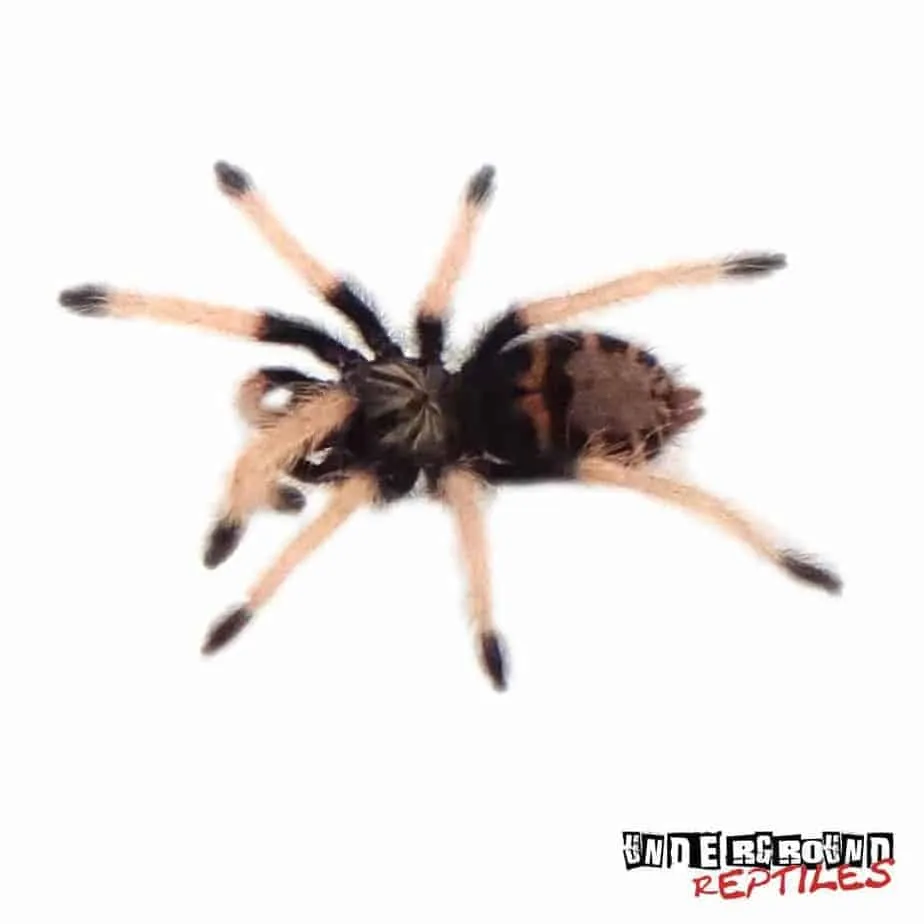
Handling a Greenbottle Blue Tarantula is not generally recommended, especially for beginners. They are more defensive than some other tarantula species and can be prone to biting if they feel threatened. Understanding the risks and taking precautions are crucial if you decide to handle your tarantula. Safety should always be the top priority.
Handling Precautions
If you choose to handle your GBB, it should be done with extreme care and caution. Always handle the tarantula over a soft surface, such as a bed or a carpet, in case it falls. Avoid sudden movements, and never try to force the tarantula to move. Allow it to crawl onto your hand at its own pace. It is important to remain calm and patient to avoid stressing the tarantula. Frequent handling is not recommended, as it can be stressful for the animal. Wash your hands thoroughly before and after handling to prevent the transfer of any substances. Always be aware of the tarantula’s behavior and body language, and be prepared to put it back in its enclosure if it shows any signs of stress or defensiveness.
Venom and Bites
The venom of a Greenbottle Blue Tarantula is not considered medically significant to humans. Bites are rare, but can cause localized pain, redness, and swelling. If bitten, clean the bite area with soap and water and monitor it for any signs of infection. Seek medical attention if you experience any severe symptoms or allergic reactions. The urticating hairs pose a more significant threat to humans. They can cause skin irritation, and respiratory issues if inhaled. Avoid touching or disturbing these hairs.
Common Health Issues
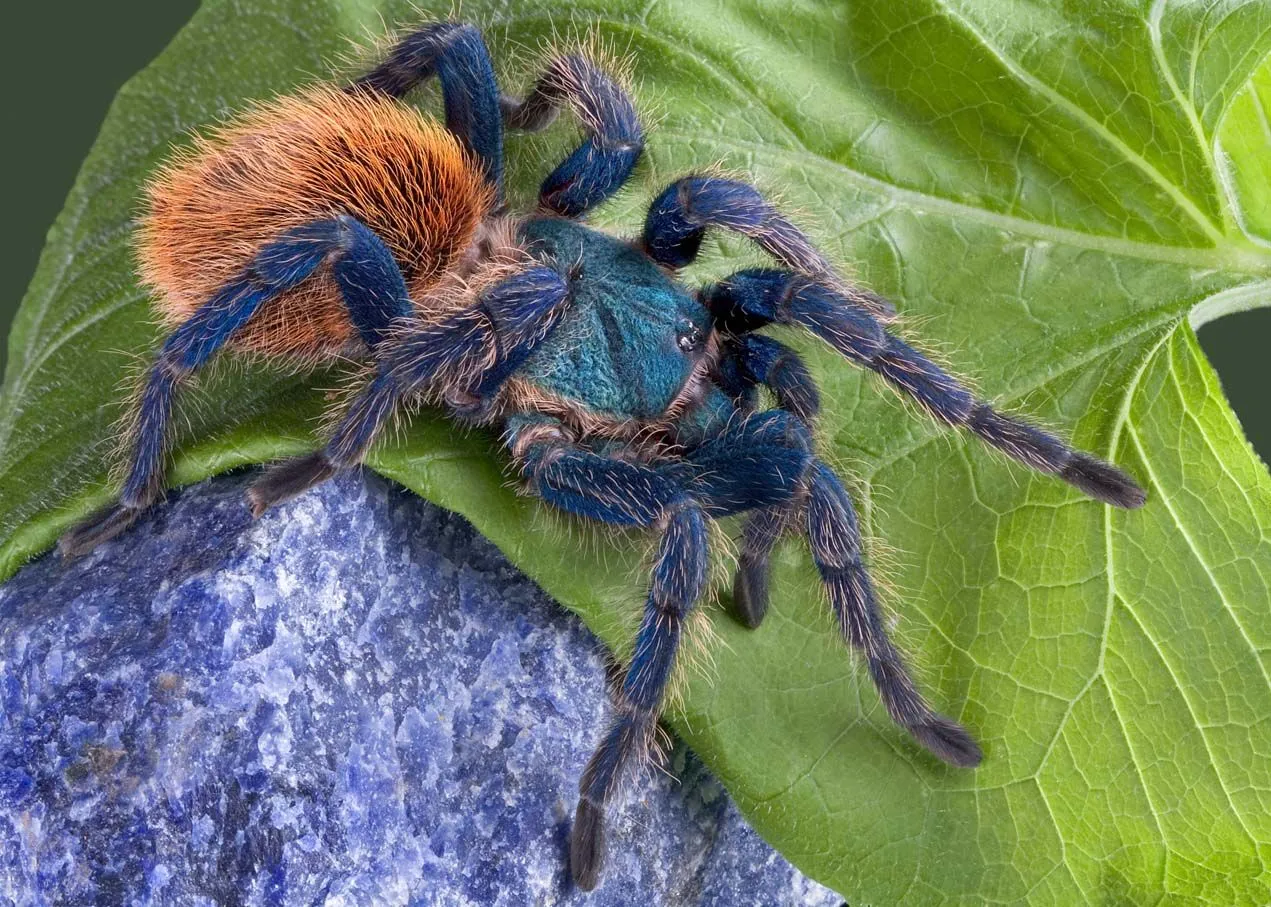
Like all tarantulas, Greenbottle Blues can be susceptible to certain health issues if their care isn’t optimal. These issues often stem from improper enclosure conditions, poor diet, or stress. Regular observation and awareness of potential problems will help you maintain the health of your tarantula. Preventative care, and vigilance, are key to preventing these issues.
Moulting Process
Moulting is a crucial process in a tarantula’s life, during which it sheds its exoskeleton to grow. The process is often stressful, and the tarantula becomes vulnerable. During premolt, the tarantula may refuse food, become lethargic, and its abdomen may darken. Ensure that the enclosure is kept at the correct temperature and humidity. Avoid disturbing the tarantula during this time. After moulting, the tarantula’s new exoskeleton is soft, and it may take a few days for it to harden. Do not feed the tarantula until its fangs have fully hardened.
Signs of Illness
Recognizing signs of illness is important for ensuring your GBB’s well-being. Lethargy, loss of appetite, and unusual behavior can indicate that something is wrong. Other signs include loss of balance, and tremors. If your tarantula shows these signs, assess its enclosure conditions. Check the temperature, humidity, and ensure that the water dish is clean. Consult a veterinarian if the condition persists or worsens. A healthy GBB will be active, eat regularly, and exhibit vibrant colors.
Breeding Greenbottle Blue Tarantulas
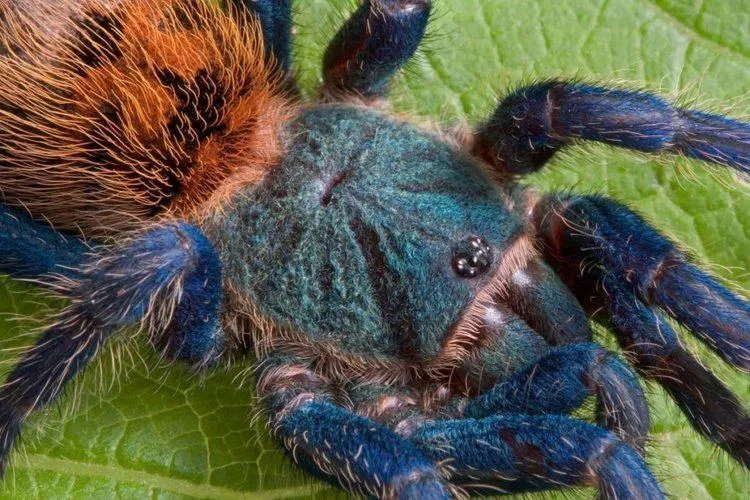
Breeding Greenbottle Blue Tarantulas can be a rewarding but challenging endeavor. It requires patience, a thorough understanding of the species, and proper setup. If you are considering breeding GBBs, it is important to do your research and be prepared for the responsibilities involved. Success in breeding involves multiple steps. From sexing the tarantulas to separating the spiderlings.
Mating and Egg Sacs
Before breeding, it’s essential to determine the sex of your tarantulas. Males have a slightly different appearance than females, and they possess palpal bulbs at the end of their pedipalps. When ready to breed, introduce the male into the female’s enclosure, under close supervision. If the female is receptive, she will allow the male to mate. After mating, separate the male to prevent him from being eaten by the female. The female will produce an egg sac, which she will guard and tend to. The egg sac will contain a large number of eggs, usually several hundred. The female will often carry the egg sac for several weeks, before the spiderlings emerge.
Raising Spiderlings
After the spiderlings hatch, it is important to care for them in their own enclosures. Provide each spiderling with a small enclosure with proper substrate, a shallow water dish, and small prey. Feed them small insects, such as fruit flies or pinhead crickets, and monitor their growth. Spiderlings are more vulnerable than adults, so they need specific care. Ensure that the enclosure temperature and humidity are correct. The spiderlings will molt several times as they grow, and proper care is important for their health and survival. Raising spiderlings requires a great deal of space, time, and resources. Carefully consider these requirements before deciding to breed GBBs.
Greenbottle Blue Tarantula as Pets
The Greenbottle Blue Tarantula is a fascinating and beautiful species to keep as a pet. However, it’s important to consider both the advantages and disadvantages of owning one. Understanding the pros and cons will allow you to make an informed decision about whether this tarantula is the right pet for you. Consider the time, commitment, and financial resources. Also understand the legal requirements for owning one.
Pros and Cons
The pros of owning a GBB include its striking appearance and the relatively low maintenance compared to other pets. They are also relatively long-lived, and can provide years of enjoyment. However, there are cons to consider. They are venomous, and although the venom is not dangerous, their bites can be painful. They require a specific environment, and care must be consistent. They also can be defensive, which limits the amount of interaction. Consider both to make an informed decision.
Legality and Regulations
Before acquiring a Greenbottle Blue Tarantula, it is crucial to check the local laws and regulations regarding exotic pet ownership. Some areas may restrict the ownership of certain tarantula species. Ensure you have the proper permits or licenses. This is to avoid legal issues, and promote responsible pet ownership. It’s important to comply with all local and federal laws regarding the keeping and transportation of exotic animals. Regulations can vary widely.
In conclusion, the Greenbottle Blue Tarantula is a stunning and captivating species. By following this guide, you can provide a healthy, enriching life for your GBB. Proper care, attention, and research will provide you with a rewarding experience as an arachnid enthusiast.
